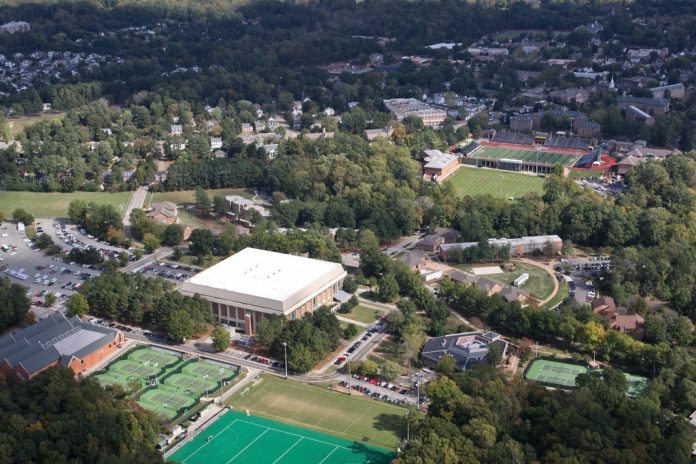Recently, a fellow member of the College of William and Mary’s Bird Club sent me a link regarding the new Kaplan Arena revitalization project, commenting that “it may be another big bird killer.” Looking at the preliminary design, I unfortunately agree. The plans for this new construction project seem to include many windows, which are often a death sentence for local birds.
Collisions usually occur because birds either try to fly through the glass or, seeing the reflection of foliage or sky, attempt to navigate through it. Over half of these collisions end with the bird losing. As a result, window collisions are one of the primary human-related causes for avian deaths. Minimizing glass-centric architecture in design is often considered one of the most effective ways to minimize collisions, but style does not have to be disregarded for the sake of sustainability. Some types of glass are designed with birds in mind and can greatly reduce the probability of these collisions. Ultraviolet patterns on this glass are practically invisible to the human eye but are still seen by birds. Other solutions can be less visually appealing, but just as effective. A visible film can be placed over windows to fix an issue that becomes considered after construction, as seen on the Muscarelle Museum of Art.
As a result, considerate design and glass choice seem to be an obvious solution in the construction of new buildings on campus. However, many Bird Club members remain concerned. Why? Because we are being kept in the dark. There is little to no information available about the details of these projects. Responses to inquiries only hold dodged questions and unjustified claims that “all of your concerns are being considered” as they have in previous projects.
Is this the same consideration that was applied to the construction of the Integrated Science Center, especially the Sky Bridge, which was one of the most devastating bird killers on campus before the student-led painting project? Is this the same concern given to the design of Muscarelle, the leader of campus bird deaths before that? These are just two examples of construction projects that have had to be fixed by student-led efforts, and these solutions were only available to be applied after observations of repeated collisions. The College is preaching sustainability but has left students to clean up the negative effects of their seemingly endless construction projects.
The lack of consideration and preemptive caution evident in these projects is cause for concern. To make things worse, any possible issue created by these new construction projects is worsened by a lack of open communication between the College and the community. If the College is choosing sustainable methods for construction, there is no reason to hide it. If not, then the conversation needs to be opened to better discuss these issues. It is time for the College to stop thinking transparency is for the birds.
Email Tara Molloy at

